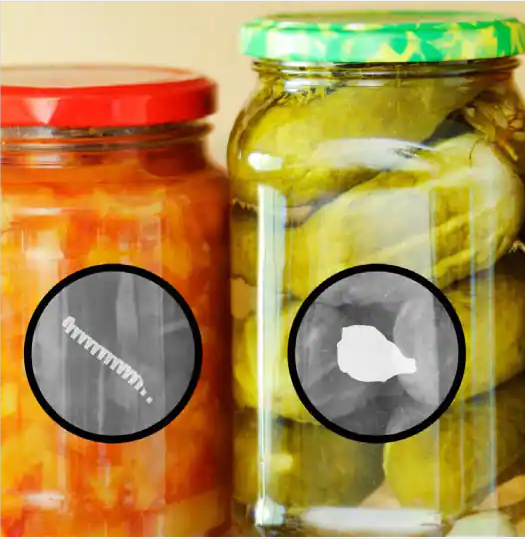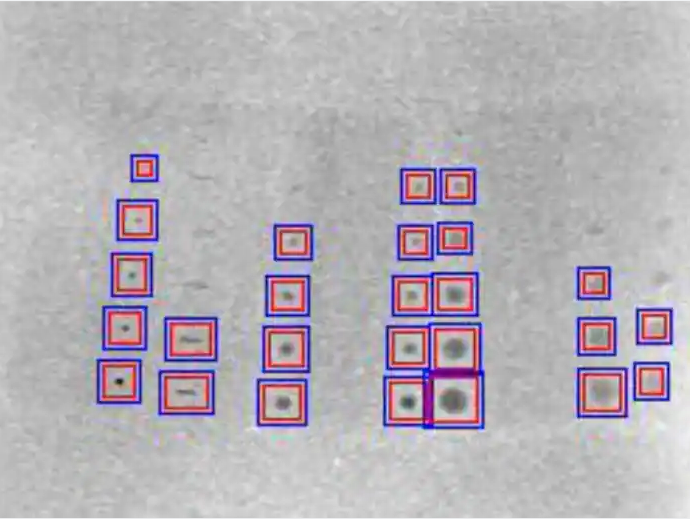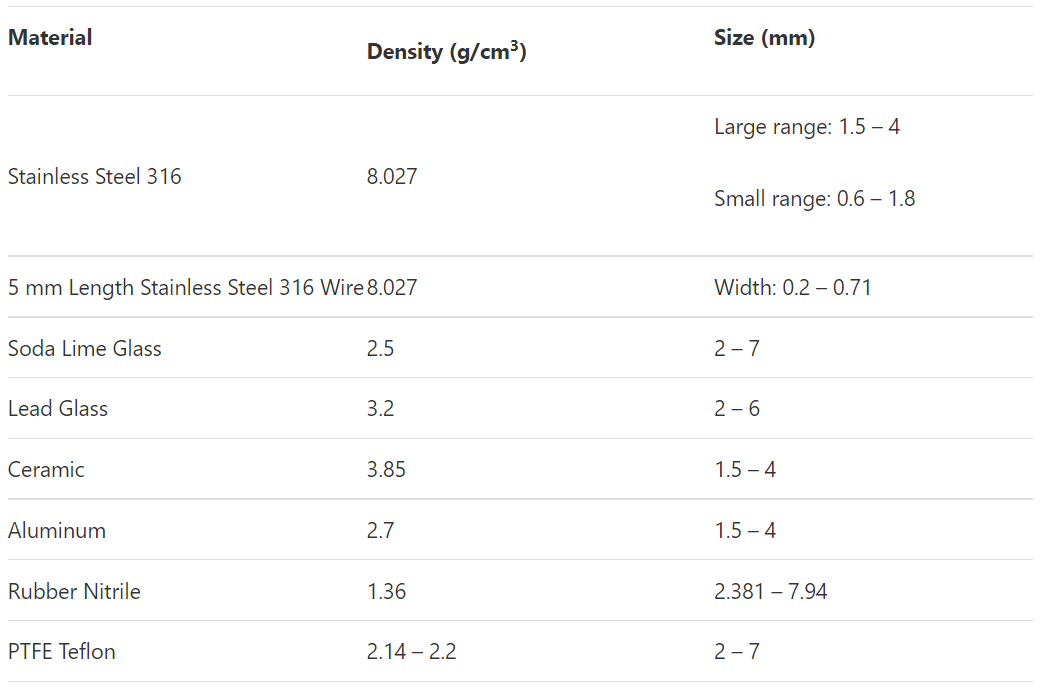Question:What type of materials, and densities, are used as commercial test pieces for X-ray instruments?
Answer:X-ray inspection systems used in food manufacturing are based on the density of the product and the contaminant. X-rays are simply light waves that we can’t see. X-rays have a very short wavelength, which corresponds to very high energy. As an X-ray penetrates a food product, it loses some of its energy. A dense area, such as a contaminant, will reduce the energy even further. As the X-ray exits the product, it reaches a sensor. The sensor then converts the energy signal into an image of the interior of the food product. Foreign matter appears as a darker shade of grey and helps identify foreign contaminants, like the stone in the pickle jar in the photo below. The higher density of contaminant, the darker it appears on the X-ray image.

When installing X-ray inspection systems in a plant, there is some initial setup and testing that must be done to validate the types and sizes of contaminants it can detect. This task is not easy to do without guidance. That’s why the manufacturer of the X-ray system should provide standard samples of contaminants, which usually consist of individual and multi-sphere test cards. The multi-sphere cards are sometimes referred to as “array cards” since one card has an array of contaminants ranging from small to large, which is especially helpful for quickly determining what size contaminant the current x-ray system can detect in one run.
Below is an example of various multi-sphere test cards used on one sample to determine smallest contaminant size detected. Without the multi sphere test cards, operators will have to pass product with a single size contaminant card until they find the one that can be detected, which can be very time consuming.

Contaminants detected left to right: 0.8 – 1.8 mm stainless steel, 0.63 – 0.71 mm width stainless steel wire, 2.5 – 4 mm ceramic, 2 – 4 mm aluminum, 3 – 7 quartz glass, 5 – 7 PTFE Teflon, 6.77 – 7.94 rubber nitrile.
Here is a list of common array cards:

We hope that answers the reader’s question. Have you been wondering about certain aspects of food weighing and inspection equipment? Just send us your question and we’ll do our best to answer. Our email ID: fanchitech@outlook.com
Post time: Aug-15-2022





